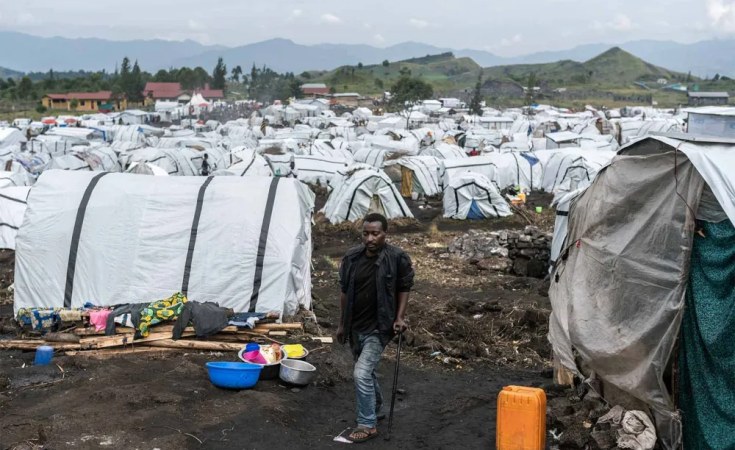The Democratic Republic of the Congo (DR Congo) is home to the second largest internal displacement crisis in Africa. But little information is shared with the outside world about what's happening in the country.
Here are five things you should know about the crisis.
#1 In eastern DR Congo, a crisis of rare violence has been going on for more than two decades.
The deadly clashes that have been raging for years in the provinces of South Kivu, North Kivu and Ituri have forced people to move several times. Everyday life is a succession of displacements.
In the city of Bule, Ituri, hundreds of displaced people leave their shelters built on the Plaine Savo and Lala sites every night to sleep in town, seeking refuge in classrooms, churches or on the street. They are fleeing night-time incursions by armed groups and acts of extreme violence that target the sites.
This complex and long-lasting crisis is having a terrible impact on the youngest. 13.7 million children are in need of humanitarian assistance. In September 2023, there were 416 schools closed due to insecurity and because they were being used to shelter displaced people.
#2 Extremely vulnerable populations
Multiple forced displacements increase the vulnerability of populations who lose their homes, their sources of income and their land. Community and social ties are weakened.
People no longer have access to basic services such as healthcare or safe potable water. Children who have dropped out of school are exposed to increased protection risks, such as being recruited by armed groups or forced into child labour.
Cases of gender-based violence are endemic. Displaced women, who often go into the forest to collect firewood to sell and feed their families, are victims of sexual assault and rape.
#3 Mass displacement
The crisis in DR Congo has resulted in the internal displacement of 7.2 million people (March 2024), making it the second largest internal displacement crisis on the African continent.
Since the beginning of 2024, more than 738,000 people have been newly displaced in DR Congo. In most cases, these displacements are due to armed conflict, but also to local inter-communal tensions, land disputes and natural disasters.
Despite the scale of this crisis, it remains one of the most neglected in the world, according to the Norwegian Refugee Council's (NRC) Neglected Crises report.
#4 Nearly one in four Congolese are exposed to severe food insecurity
According to an analysis conducted between July and December 2023, 25.4 million people, or 23 per cent of the population, face severe food insecurity (Phase 3 or higher according to the IPC Acute Food Insecurity Classification). This means that many are only marginally able to cover their basic food needs, having lost other essential means of subsistence. Lack of transport infrastructure, enclaved locations, climatic hazards, and a lack of tools and farming inputs, are crucial factors in worsening the food insecurity.
In provinces where armed fighting is raging, the situation is even more critical. In North Kivu and Ituri, one in three people suffers from severe food insecurity. Food production is targeted in attacks. The system of production, processing and access to food has been permanently altered.
#5 Access to land is a source of tension
In 2022, land disputes were the second biggest reason for displacement. With a birth rate of 6.2 children per woman (2021) - one of the highest in the world - the Congolese population is growing rapidly and is expected to reach 217 million by 2050.
There is therefore a strong pressure for access to land, especially in conflict zones where insecurity leads to massive displacement. This leads to disputes between displaced people and host communities. Limited access to land and land disputes exacerbate existing protection problems, such as access to basic services, access to education, risks of exploitation and gender-based violence.


